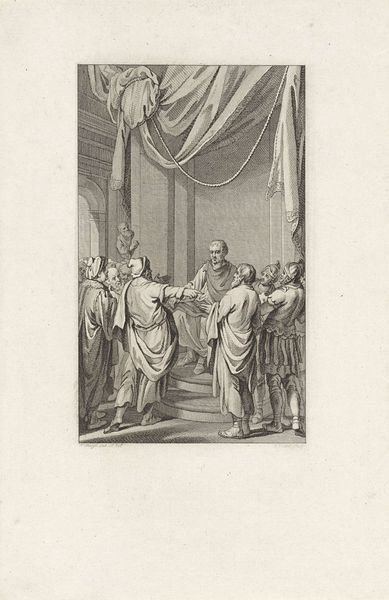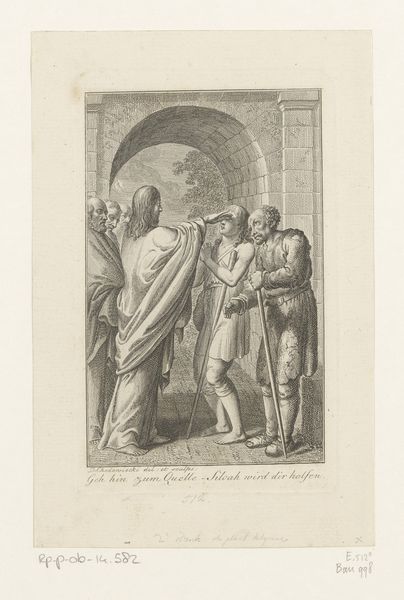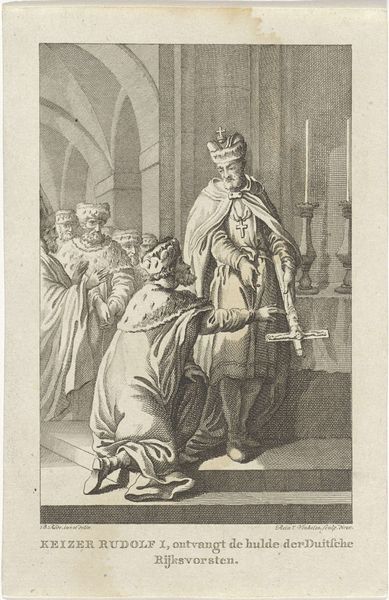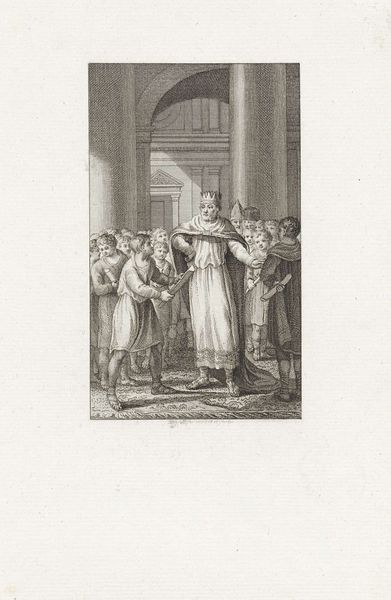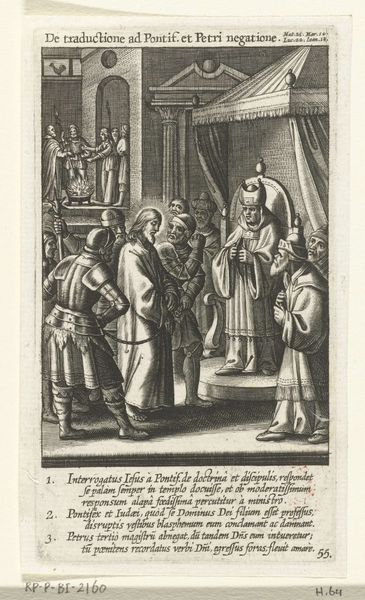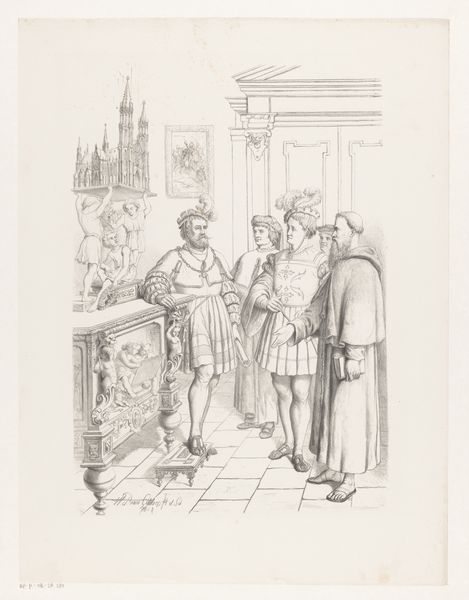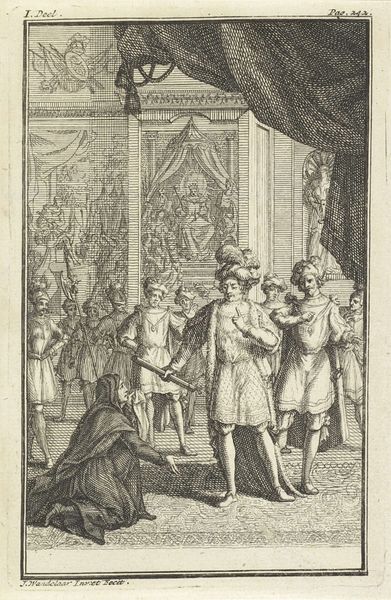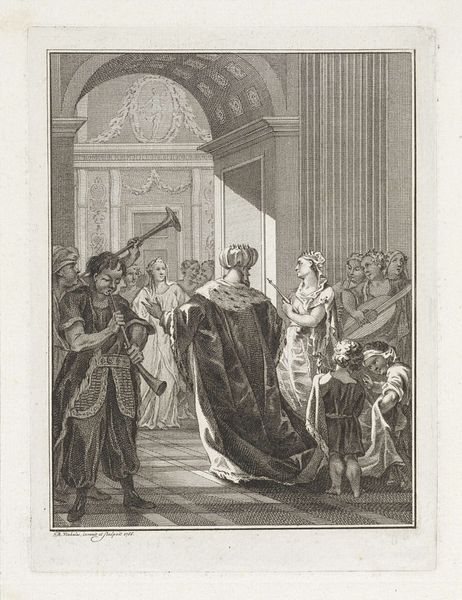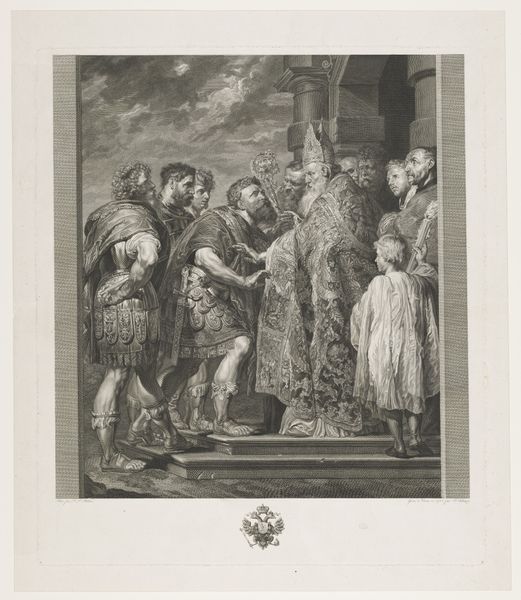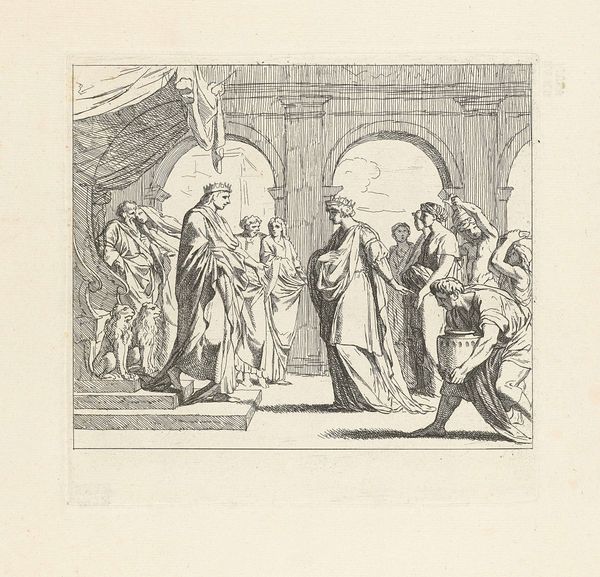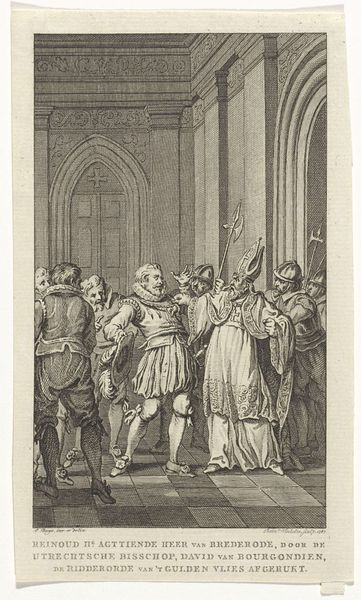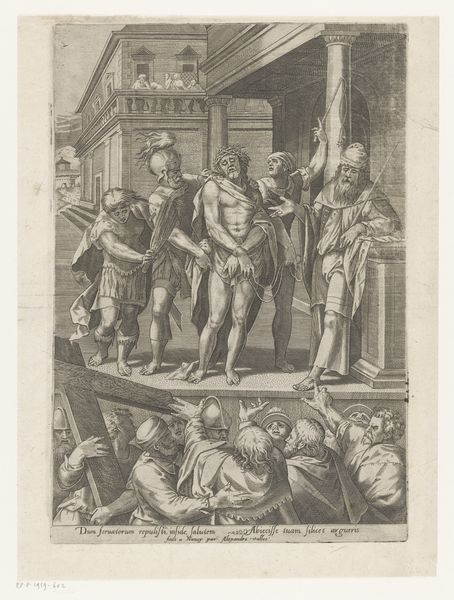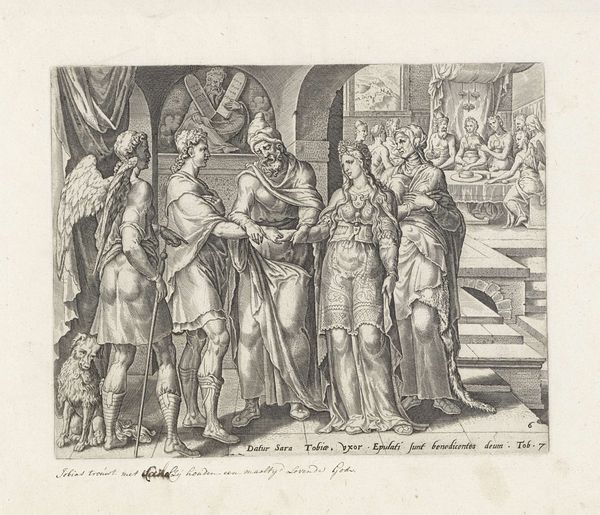
De Rijksstanden van Hongarije door Koningin Maria Theresia tegen haaren Vijanden opgeroepen 1751 - 1816
0:00
0:00
reiniervinkeles
Rijksmuseum
Dimensions: height 160 mm, width 106 mm
Copyright: Rijks Museum: Open Domain
Curator: So, let's turn our attention to this print: "De Rijksstanden van Hongarije door Koningin Maria Theresia tegen haaren Vijanden opgeroepen," created between 1751 and 1816. The artist here is Reinier Vinkeles, working in engraving. Editor: The first thing that hits me is how stoic everyone looks, yet there’s an undeniable tenderness radiating from the queen and her child. The setting is austere, but the emotional pull is surprisingly strong. Curator: It's intriguing to note the theatricality inherent in this historical moment captured by Vinkeles. Maria Theresa, invoking Hungarian support while holding her infant son, underscores themes of dynastic succession and the vulnerability of leadership amidst conflict. Her stance here reflects a calculated performance aimed at galvanizing loyalty. Editor: Definitely! It’s like a perfectly staged tableau vivant. All eyes are on the Queen. And while the composition directs our gaze to her, the lines also convey a strong feeling of impending war. I get a very Baroque sense of drama and movement, frozen in time. Curator: I agree; and further, we should address how her gender plays into the interpretation. Considering the artwork's place within a longer history of female leadership—figures like Elizabeth I and Catherine the Great come to mind—one has to ask how this scene contributes to the negotiation of power and motherhood. Editor: That adds another layer of depth. Holding her child while rallying her subjects – talk about multifaceted! And that single spotlight emphasizes her position, highlighting that duality. It makes you wonder about the cost of it all. Curator: Absolutely. Vinkeles is very deliberately playing on the image of a ruler drawing strength and resolve from those familial bonds, which have political significance in monarchical societies. Editor: I suppose you could see the baby as both her biggest vulnerability and her ultimate strength... it really leaves you with so much to think about. What a complicated picture! Curator: Indeed, it is precisely this tension—this intersection of familial, political, and gendered identities—that allows us to unpack broader cultural discourses around power in eighteenth-century Europe. Editor: Agreed, and after some reflection on all its elements, what lingers for me is the humanity – that tiny babe – contrasted against the rigid historical context. Makes history breathe, somehow.
Comments
No comments
Be the first to comment and join the conversation on the ultimate creative platform.
